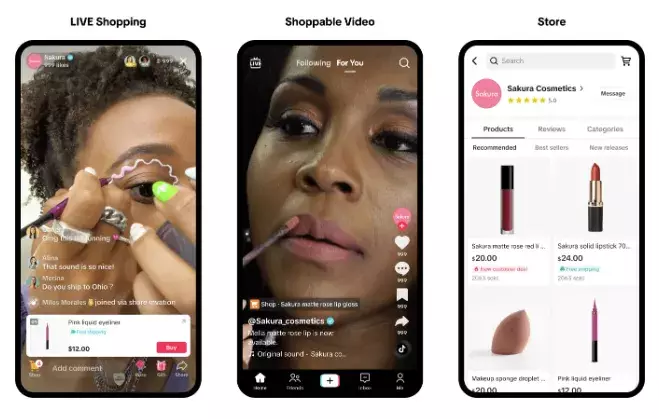TikTok, despite facing significant hurdles in North America, continues to explore opportunities for growth and expansion in other regions. This week marks a pivotal moment for the platform as it prepares to launch TikTok Shop in Mexico, a significant step in its ambition to penetrate the Latin American market. This expansion signals TikTok’s intention to adapt its successful in-app shopping strategies observed in its Chinese counterpart, Douyin, and apply them effectively in new territories.
TikTok’s venture into Mexico is not merely a random decision; it is part of a calculated strategy to replicate the commercial success the platform has enjoyed in China. With the introduction of TikTok Shop, merchants in Mexico have been encouraged to create storefronts on the platform since January, paving the way for the initiation of transactions in February. To attract merchants, TikTok has offered an incentive: those who register locally can operate without commission fees for the first three months. This approach mirrors the tactics employed in China, where TikTok’s shopping features have been a resounding success.
The potential for growth in Latin America is substantial. E-commerce in this region is on the rise, with consumers increasingly gravitating toward online shopping options. TikTok’s unique format, geared toward dynamic and engaging content, could provide a compelling shopping experience that resonates well with local users. Initial consumer engagement may suggest that TikTok could become a significant player in the Latin American e-commerce sphere.
While TikTok Shop is just beginning to take root in Mexico, comparisons to its performance in China highlight both the challenges and opportunities existing in the global marketplace. In 2022, Douyin generated a staggering $500 billion in sales, a benchmark that illustrates the platform’s potential when shopping features are fully integrated and utilized.
In stark contrast, TikTok’s sales in the U.S. were only around $4 billion in 2023. This discrepancy raises questions about the scalability of TikTok’s in-app shopping features in Western markets. Nevertheless, positive indicators have started to emerge. For instance, last year saw a threefold increase in sales on Black Friday, powered by live-stream shopping events that echo successful practices in China. Furthermore, interest in in-stream shopping has ramped up in Southeast Asian markets, offering hope that similar trends could unfold in Latin America.
Navigating Legislative Challenges in the U.S.
As the platform progresses internationally, the specter of legislative challenges in the United States looms large. TikTok currently faces a precarious situation, with discussions about a potential ban in the U.S. stemming from national security concerns. The Trump Administration is working on a resolution that may involve American investors purchasing a share in the app, a move aimed at ensuring its continuity within the U.S. market.
If a resolution cannot be found promptly—given the tight deadline of about 52 days—the ramifications for TikTok could be severe. The inability to operate in the U.S. could compel the platform to expedite its international ventures, making Latin America’s burgeoning e-commerce market all the more important for future revenue streams.
Despite the opportunities, TikTok must navigate various limitations to succeed in the Mexican market. The platform has outlined restrictions on certain product categories within TikTok Shop, including items related to jewelry, healthcare, and maternity. These limits are likely put in place to manage regulatory compliance and consumer safety. Such regulations signify the complexities involved in international expansions, where local laws and cultural considerations must be meticulously respected.
While TikTok grapples with significant challenges in its primary markets, the recent launch of TikTok Shop in Mexico marks an exciting chapter in its development. As the brand seeks to leverage successful strategies from its Chinese counterpart and adapt them for Latin American consumers, it remains to be seen whether such initiatives will meet the anticipated success. With the stakes rising, TikTok’s future may hinge on its ability to attract and engage shoppers in markets beyond the borders of the U.S.


Leave a Reply